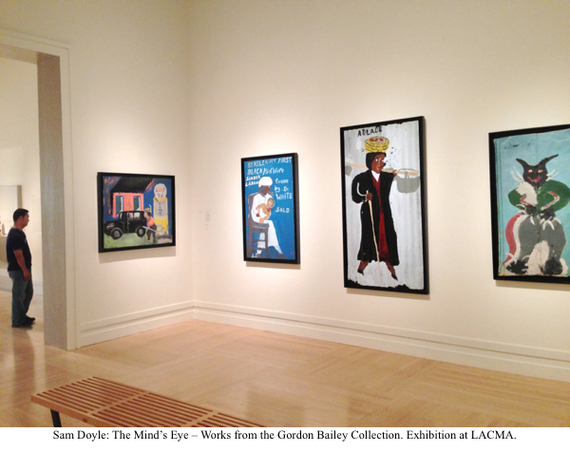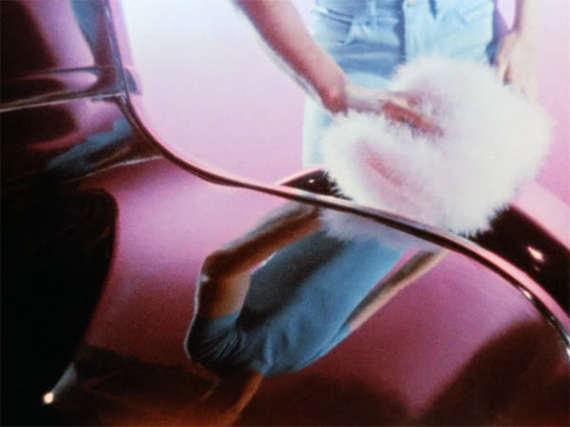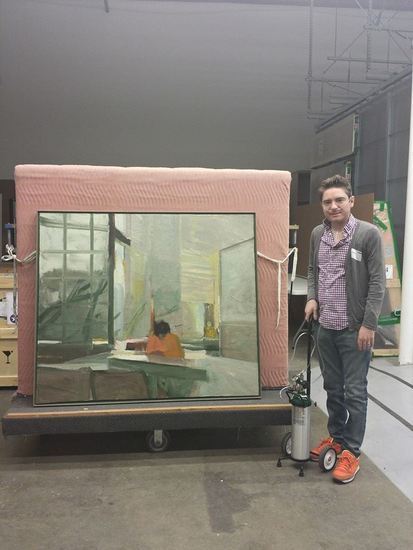The Philadelphia Quakers may have been right about many things, but they were wrong about entertainment. Quakerism, for all its fine attributes in the fields of peace and justice, tended to downplay entertainment and the arts. As a result, Philadelphia was a Johnny-come-lately to the world of musical entertainment. This is why people of long ago called it a droll, conservative town that was half alive on a Friday and virtually non-existent on Sunday.
That changed to some degree in 1839 when the city began to make plans to build a grand opera house. Years passed before that vision became a reality.
In 1854, architects Napoleon LeBrun and Gustave Runge won an architectural competition to design what would later become the oldest opera house in America: The Academy of Music on South Broad Street.
In 1855, the year of the building's groundbreaking, Broad and Locust Street was a residential area and thought to be far enough away from traffic noise to build an opera house.
Budgetary restrictions, however, forced the architects to concentrate on the interior of the building.
The Academy's exterior, despite failed plans to redo it in marble, remained as simple as what was then termed a "market house." Its exterior does, in fact, resemble a Quaker meeting house but that all changes when you go inside. The Academy's lavish neo-Baroque interior made it one of the most spectacular buildings in the city.
The huge 14 Corinthian columns supporting the balconies in a recessed upward tiered fashion, and Karl Heinrich Schmalze's murals illuminated by the central crystal chandelier, caused Le Brun and Runge to note that "acoustic and optical effects have been very carefully studied and particular attention given to the comfort and accommodation of the audience."
The crystal chandelier alone is 50 feet in circumference and weighs 5,000 pounds. It was electrified in 1900.
"The architects placed a dry well under the main floor, known as 'the Parquet,' to balance the dome on the roof which, the experts tell us, contributes to the spectacular sound. Also, during its construction, the Academy was allowed to stand roofless for one year to be seasoned,"
wrote Philadelphia author John Merriam. One can only imagine what a roofless Academy of Music was like, especially with snow, rain, sleet and random "spot check" bombs from flying pigeons.
The Academy stage has hosted world famous musicians like Marian Anderson, Maria Callas, Aaron Copland, Gustav Mahler, Richard Strauss and Joan Sutherland. Poet Walt Whitman used to take the ferry in from Camden and attend operas there. That's why whenever I attend an opera at the Academy, I think of Whitman sitting somewhere in the vast hall, and then going out onto Broad Street to walk up to City Hall (which he admired) and then take a streetcar to the ferry at Penn's Landing.
"The Academy of Music, with its gilt, festoons, griffons, shells and other carvings, is older than the Convent Garden Opera House or the Paris or Vienna operas and has its own particular aura, its own special glamour," Merriam noted. This, despite the fact that the audience seats are small and the leg room is minimal.
As a child, my great aunt Dora introduced me to the Academy of Music. She would take me into town from Bala Cynwyd on the Paoli Local. We'd have lunch at Stouffer's in Penn Center, then walk to Rittenhouse Square to feed the pigeons, then visit the Eagle in Wanamaker's, and then maybe stop in at Saint John the Evangelist church on 13th Street to light a candle. Going to the Academy with Aunt Dora was my first introduction to classical music. I especially liked Ravel's Bolero, "Beethoven's Ninth," and Geoff's "The Grand Canyon Suite." Aunt Dora used to tell me that an education in classical music was a necessary part of a good education. She called it "good breeding."
One building that Aunt Dora never showed me was the Julian F. Abele-designed Philadelphia Free Library. Abele, a black architect, didn't get a lot of credit for his work, despite the fact that the building is one of the most iconic structures in the city.
The building was first proposed by William Pepper and head librarian John Thomson in 1894. In 1897, Philadelphians authorized a city loan of $1 million through a referendum for a new structure on a new site. (The library was previously housed in a room the size of a closet in City Hall, in the Old Concert Hall building at 1217-1221 Chestnut Street and then at 13th and Locust Streets). In 1910, the present site at 19th and Vine Streets was selected.
Horace Trumbauer, an architect from the city's Frankford section, was the chosen architect for the project. Trumbauer hired Julian F. Abele, one of the first university-trained black architects, as his assistant. Abele, a graduate of the University of Pennsylvania and the Pennsylvania Academy of the Fine Arts, based his rendering on French architect Ange-Jacques Gabriel's twin facades for the Ministry of the Marine as well as the Hotel de la Crillon on the Place de la Concorde in Paris. Abele held 18th century French classical architecture in high esteem.
However, the "slash and cut" reformist Mayor Rudolph Blankenburg questioned additional funding for "the extravagant Benjamin Franklin Parkway," then under construction. Without a parkway, there could be no main library, so librarian Thomson successfully rallied the city's cultural leaders to usurp the nearsighted, cheap mayor. The campaign hit another snag: city lawyers warned of coming court battles, so the project was put on ice. Thomson told benefactor Andrew Carnegie, who donated $1.5 million for 30 branch libraries that "We are in very great trouble in Philadelphia as to our main library." It was a cry for help.
Thinking the project may be killed, library officials permitted fire and brimstone preacher Billy Sunday to build a makeshift tabernacle on the site. The hallelujahs came to an end, however, when yet another city referendum decided that the city would fund the stalled project. The project hit another snag and groundbreaking ceremonies were delayed yet again. The new building would not open until 1927.
Trumbauer's ideas for the new library included freestanding vertical book stacks, a 19th century innovation designed to house large numbers of volumes. As for the design of the building, Abele once said that the "lines are all Mr. Trumbauer's, but the shadows are all mine."
Fiske Kimball, director of the Philadelphia Museum of Art at the time, called Abele "certainly one of the most sensitive designers anywhere in America."
One building that my Aunt Dora never mentioned was Philadelphia's Divine Lorraine Hotel at Broad and Fairmount Street in North Philadelphia.
Designed in the French Renaissance Revival style by architect Willis Gaylord Hale (1848-1907) in 1892-94, the Lorraine began life as an opulent apartment building in the epicenter of what was then one of Philadelphia's most exclusive areas, North Philadelphia, which in those days included the nouveau-rich mansions of William Elkins and the Wideners.
Life was glorious for the Grand Dame of North Broad Street and would continue to be satisfying even after its purchase in 1900 by the Metropolitan Hotel Company, which turned it into apartments.
Time sometimes has a way of turning the finest piece of alabaster into sandstone, but the Lorraine was still in top form when it was purchased by Father Divine in 1948, who transformed it into the city's first racially integrated quality hotel.
Father Divine was a benevolent Harlem preacher and civil rights and social welfare activist whose purchase of the building meant more than a name change. His International Peace Mission had its headquarters in the building and found employment for many black Philadelphians. After Father Divine's death in 1965, the Peace Mission owned and operated the hotel until 1999, the year that brought the finest preserved late 19 century apartment house in the city into another albeit less positive era.
For half a decade, the building was vacant and unattended, visited only by pigeons, rats and an occasional vagrant in search of shelter, despite its having been awarded the official Pennsylvania State Historical Marker in 1994.
Some spoke of demolishing the landmark at the time, while others, like a New York real estate entrepreneur who purchased the building in 2000, wanted to refurbish it. Prospects seemed good for the Grand Dame, especially in 2002 when the building was added to the National Register of Historic Places. Real estate's unpredictable roulette wheel however, brought about another abrupt jolt: the building's resale and the unveiling of plans to build condominiums and retail space.
With the new sale in the bag, the building's future seemed certain, and the American Institute of Architects Landmark Building Award in 2005 seemed to confirm that fact.
When yet another developer bought the Lorraine for $10 million with plans to add five 15-story condo towers behind the hotel, the future seemed assured.
"Thus do we build castles in the air when flushed with wine and conquest," Samuel Butler warns us, and so it's been for the Grand Dame of North Broad. She still sits waiting and unattended, filled with lead paint and asbestos as memento hunters sometimes search through the place for old leftover furniture and religious literature from the 1960s.
The legendary Church of the Advocate designed by architect George M. Burns (1838-1922) stands as a monumental example of Ecclesiological design in the United States. Its French Gothic forms include stained glass, flying buttresses and ornamental gargoyles.
The interior vistas of the church are immense and almost symphonic. "Painting, sculpture and architecture that ought to compete and disagree somehow harmonize into something larger," wrote critic Peter Rockwell. "In the Church of the Advocate, paintings that by their color, form and meaning are an art of protest function together with carvings by master carvers who never thought of themselves as artists."
The nave, with a 30-foot-high stone statue of the angel Gabriel, is especially dramatic. Gabriel used to perch outside the church, but time and the elements have forced the statue's removal to a more secure position inside the church near the medallion-studded rose window. The rose window is shrouded behind a vast net that was put up decades ago to collect falling plaster from the capitals near the ceiling.
The church, which is listed on the National Register of Historic Places, and which was designated as a landmark by the Philadelphia Historical Commission in 1980, began to deteriorate in the 1960s.
Originally built as a Presbyterian church in honor of George W. South, a wealthy Philadelphia merchant, it was thought too ornate for Presbyterian worship services and was offered to the Episcopal Diocese.
One of Aunt Dora's favorite haunts was Frederick Grafe's Fairmount Water Works, especially as seen from the West River Drive. During one such visit with her, I remember watching a boy my own age lower a bucket on a rope into the muddy waters of the Schuylkill River. Along the balconies high above the water, other boys also lowered buckets. Less successful than pole fishing, bucket fishing could take hours and getting a catch was often left to chance, although during the afternoon in question, I saw one boy catch a large catfish. Pulling up the rope as if it was an anchor, I saw the fish jump above the rim of the bucket yet never managing to escape. In a matter of minutes the huge bewhiskered brown catfish was dead.
If the handsome neo-classical columns that grace architect Graff's Fairmount Water Works could talk, they'd tell a hell-raising tale.
They would paint a picture of a cramped, dirty and fetid city in which the 1793 Yellow Fever epidemic had forced the government to move the capitol from Philadelphia to Washington. The once great "Athens of America," as Philadelphia was then called, was awash in disease and contagion, thanks mainly to a nasty mosquito imported from the Caribbean. It didn't help that the city's water supply at that time consisted of cisterns, springs and wells.
Benjamin Latrobe designed the waterworks as a response to the epidemic that wiped out almost 60 percent of the city's population.
The first waterworks were located in Center Square (the site of City Hall). Although better than cisterns and wells, Latrobe's steam-powered pumps kept failing. He moved them to a reservoir on top of Fairmount in 1812 but this also proved inadequate. In the same year, Graff designed a dam and mill house at the Fairmount location. At this time the system changed from steam to water power. The new complex made Philadelphia's water system the most advanced in the world.
The Water Works' striking resemblance to Roman temples caught the eyes of Charles Dickens and Mark Twain as well as many regular Americans -- who made it the most popular 18th century tourist attraction after Niagara Falls. The aesthetic appeal of the 12-acre Graff designed park surrounding the waterworks -- which included a garden with "storybook" paths and esplanade -- encouraged further additions to the complex, such as the 1859 mill house built with a wide patio top and a series of boat houses known today as Boat House Row.




















































